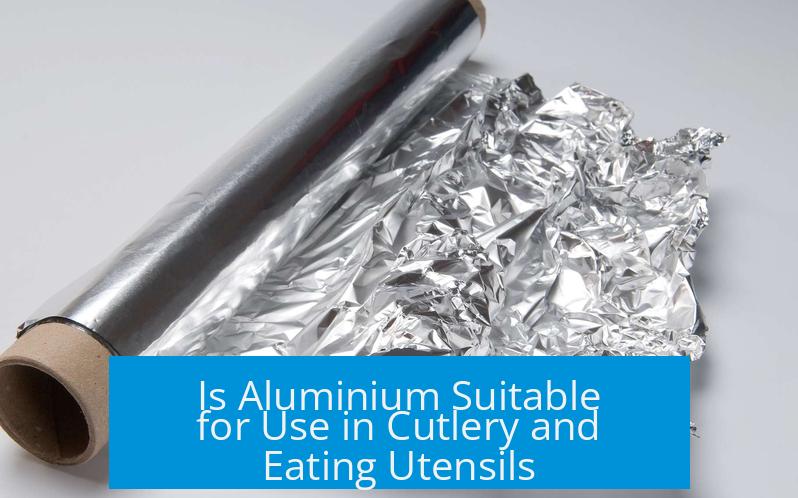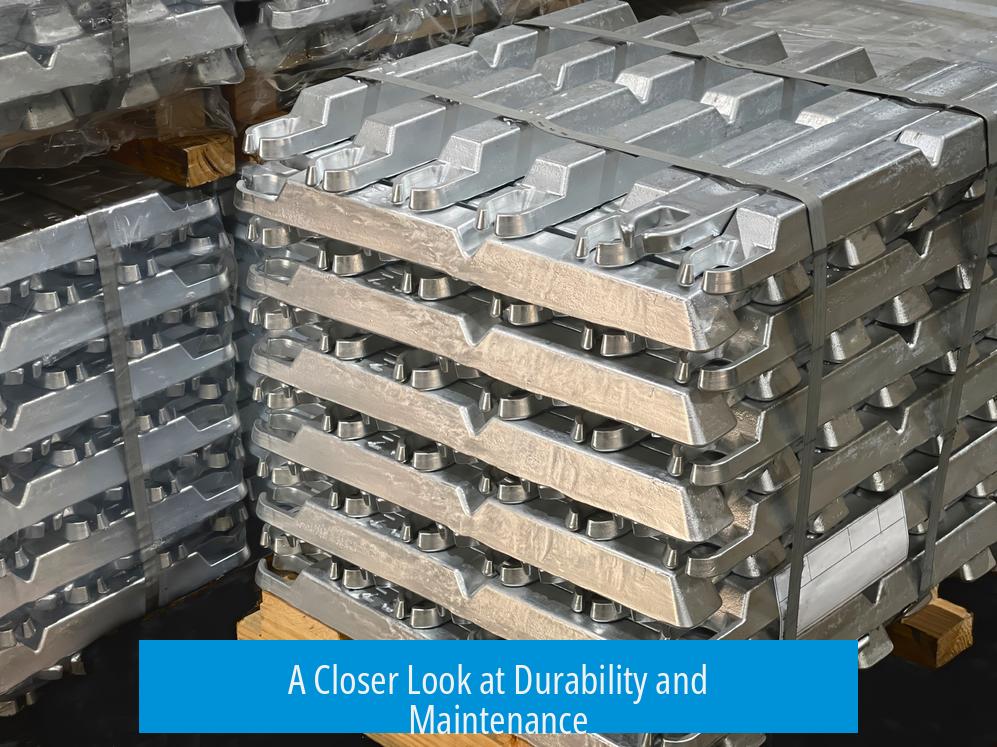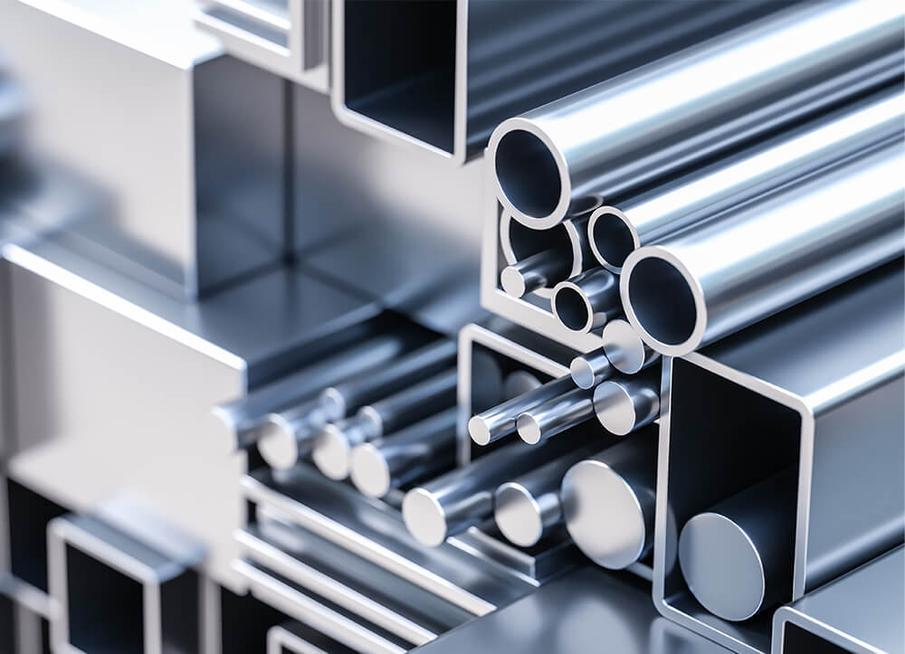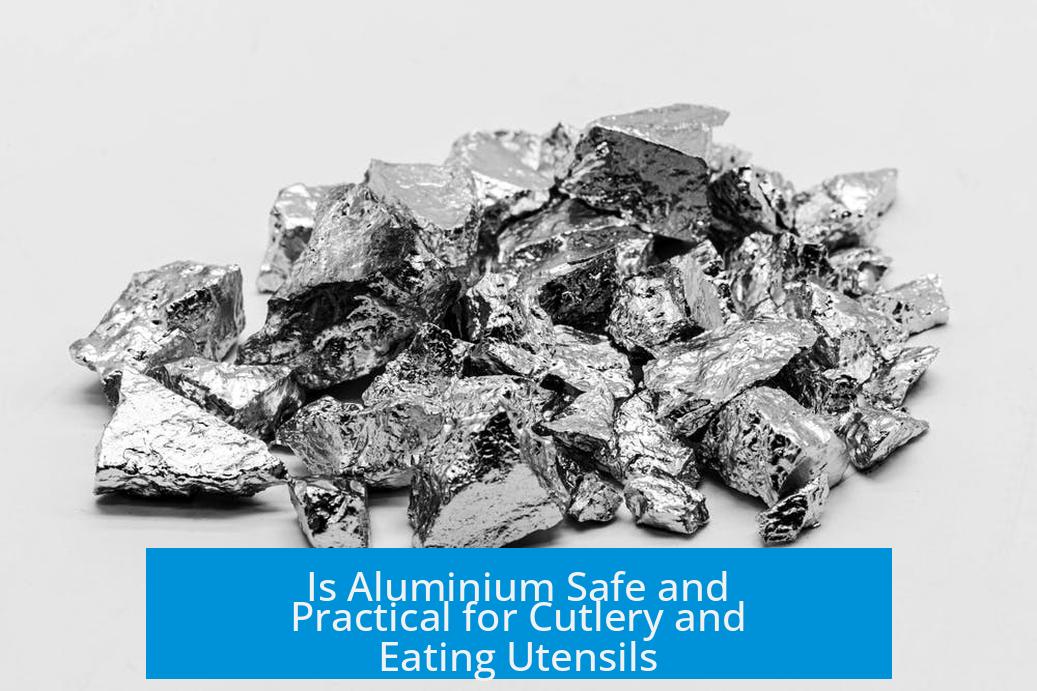Is Aluminium Suitable for Use in Cutlery and Eating Utensils?

Aluminium is suitable for use in cutlery and eating utensils primarily because it is safe for contact with food, despite some limitations related to durability and maintenance. It does not pose significant health risks when used properly in kitchenware.
Durability and Maintenance
Aluminium is softer than other common cutlery metals like stainless steel. This softness makes aluminium utensils prone to bending or wearing down faster with regular use.
Dishwasher detergents can also deteriorate aluminium quickly, which impacts the appearance and lifespan of the utensils.
Despite this, aluminium cutlery remains widely used for its light weight and ease of handling.
Safety Concerns and Health Myths
- There is a common myth linking aluminium exposure to cancer, nerve damage, or dementia.
- Scientific evidence refutes these concerns, as aluminium is present in many everyday items safely.
- Vaccines use aluminium compounds as adjuvants, antacids contain aluminium hydroxide, and deodorants often have aluminium salts.
- Cooking pots and food packaging, such as aluminium foil and cans, involve constant food contact without harmful effects.
Toxicology and Biological Access

Aluminium’s toxicity is significant only if introduced directly into the brain in very low doses, which is not a normal exposure route.
The human body’s blood-brain barrier prevents aluminium ions from reaching the central nervous system under regular ingestion or contact.
This biological protection minimizes the risk of neurological damage from typical use of aluminium utensils.
Summary of Aluminium Use in Cutlery
| Aspect | Details |
|---|---|
| Durability | Low; prone to wear and affected by dishwasher detergents |
| Safety | Safe for food contact; no credible link to cancer or dementia |
| Handling | Lightweight and corrosion-resistant |
| Health Risks | Negligible when used properly; biological barriers limit toxicity |
- Aluminium cutlery is generally safe to use with food.
- Its softness and sensitivity to detergents require careful maintenance.
- Health concerns about aluminium are not supported by scientific evidence.
- Biological protections prevent aluminium toxicity from normal utensil use.
Is Aluminium Suitable for Use in Cutlery and Eating Utensils?
Short answer: Yes, aluminium is generally suitable for use in cutlery and eating utensils, but with some caveats regarding durability and care.
Let’s cut to the chase: aluminium is safe to eat from. But is it truly practical? Imagine you’re at the dinner table, picking up that shiny aluminium fork. It’s light, sleek, but will it hold up? This post explores aluminium’s role in cutlery, addressing durability, safety, and the myths that swirl around this metal.
A Closer Look at Durability and Maintenance

Aluminium is known for being soft. Unlike stainless steel forks that can easily last decades, aluminium utensils have a shorter lifespan. Why? They tend to get scratched, bent, or worn down pretty quickly. If you toss your metal cutlery into the dishwasher frequently, that lifespan shrinks even more— dishwashing detergents are tough on aluminium, often corroding or dulling its surface fast.
So, if you’re thinking about aluminium cutlery for everyday use, be prepared for more maintenance or replacements over time. Hand-washing is highly recommended. While this might sound like a hassle, the lightweight nature of aluminium cutlery makes it very popular for camping and travel kitchens where bulk and weight matter more than durability.
Is Aluminium Safe for Health? Busting the Myths
Aluminium often gets a bad rap, especially in the realm of health. Some people worry it causes cancer, nerve damage, or even dementia. These fears stem from outdated or misinterpreted information. But here’s the reality:
- Many everyday products contain aluminium safely: vaccines use aluminium sulfate; antacids contain aluminium hydroxide; deodorants include aluminium salts.
- Aluminium cookware is common and widely used around the globe without a hitch.
- We relish our beers and sodas from aluminium cans, and wrap food snugly in aluminium foil every day.
The evidence suggests aluminium exposure through utensils and daily use isn’t something to fear. Regulatory bodies find food-grade aluminium perfectly safe.
Toxicology: What Happens If Aluminium Gets Inside You?
Here’s a detail that’s easy to overlook: injecting aluminium directly into the brain in small doses can cause neurological damage. But, and this is a big but, our bodies are built with barriers that keep aluminium ions from reaching the brain.
The blood-brain barrier acts like a shield, blocking these metal ions from passing through. Plus, aluminium’s chemical nature doesn’t favor buildup in the central nervous system when ingested normally.
So, while extreme cases in labs look scary, everyday use of aluminium cutlery does not pose that risk.
Benefits Beyond Safety: Why Choose Aluminium Utensils?

You might ask: If aluminium isn’t the toughest, why bother? Here are a few perks:
- Lightweight: Great for picnics, camping, and travel. Carry less, enjoy more.
- Cost-effective: Aluminium cutlery comes cheaper than stainless steel sets, making it perfect for budget-conscious shoppers.
- Recyclability: Aluminium is 100% recyclable without quality loss. Eco-friendliness scores here!
Besides, aluminium utensils often come with smooth finishes that feel nice in your hand and don’t rust like iron or steel would.
How Does Aluminium Cutlery Compare to Others?
| Material | Durability | Weight | Care | Health Safety | Cost |
|---|---|---|---|---|---|
| Aluminium | Low to Moderate (Soft, scratches easily) | Very Light | Hand-wash preferred | Safe (debunked myths) | Low |
| Stainless Steel | High | Heavier | Dishwasher safe | Safe | Moderate to High |
| Plastic | Low (prone to breakage) | Light | Dishwasher safe (varies) | Varies (depends on plastic type) | Very Low |
Aluminium strikes a unique balance: lower cost and weight, with some sacrifice in hardness and longevity. Stainless steel is the workhorse, while plastic clings to disposability and low price.
Practical Tips When Using Aluminium Cutlery
- Avoid the dishwasher: Hand wash and dry immediately to prevent corrosion and stains.
- Store Separately: Aluminium parts can discolor on contact with other metals. Use a soft cloth or keep them apart.
- Use for Cool or Warm Foods: Avoid contact with highly acidic or salty foods for extended periods to prevent minor reactions.
Are you worried about that slight metallic taste sometimes noticed with aluminium utensils? This happens mainly with acidic foods, and some anodized aluminium products reduce this issue significantly.
Wrapping It Up: Should You Embrace Aluminium Cutlery?
Absolutely — if lightness, cost, and recyclability top your list. Aluminium cutlery suits casual settings, outdoor use, and those mindful of budget and environment. Just remember the maintenance and durability trade-offs.
Worried about health? You can relax. Aluminium is safe to eat with, despite the myths. It mingles in your daily life from vaccines to soda cans without harm.
Still unsure? Try a small aluminium cutlery set for picnics or as a backup in your kitchen. Notice the feel, weight, and ease of cleaning. Then decide if it matches your lifestyle.
So, next time you see shiny aluminium cutlery, think twice—and enjoy that lightweight fork as you dig in. After all, eating should be a pleasure, not a puzzling chemistry experiment!





Leave a Comment